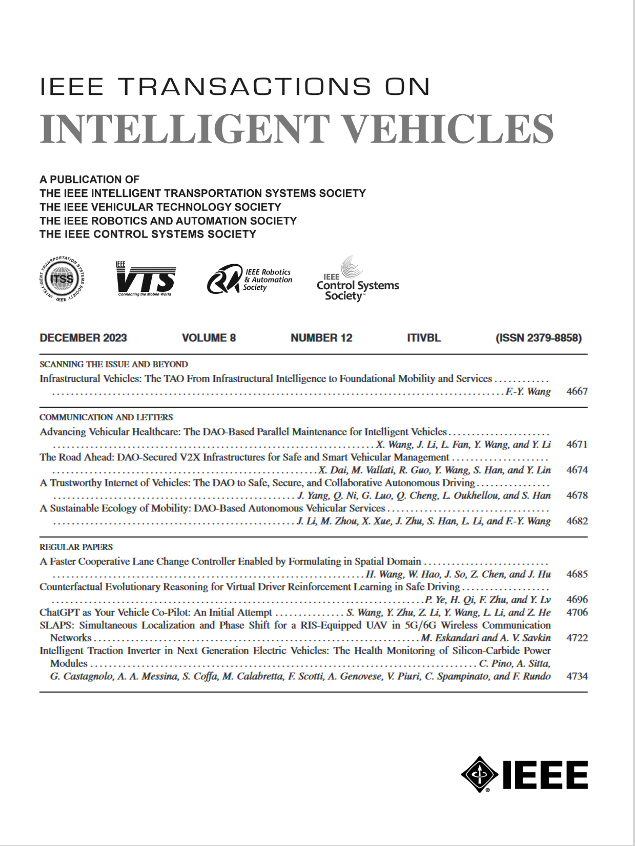使用混合跳跃UNet和生成对抗网络的热红外图像着色
IF 14.3
1区 工程技术
Q1 COMPUTER SCIENCE, ARTIFICIAL INTELLIGENCE
引用次数: 2
摘要
普通相机在没有足够光线的夜晚或极端天气条件下无法捕捉到高质量的图像,而热红外(TIR)相机在这种情况下并不受限制。因此,TIR成像技术被广泛应用于军事、监视、夜间交通等场景。然而,TIR图像是单色的,并且这种图像的大部分细节丢失,这对于人类或计算机系统来说是难以分析的。将TIR图像转换为可见图像有利于后续观察或进一步处理。尽管在实现从TIR图像到彩色可见图像的转换方面取得了一些进展,但边缘失真和语义混乱仍有待解决。因此,我们提出了一种基于混合跳过UNet(MS-UNet)的联合生成对抗性网络图像着色模型,该模型由MUGAN表示。首先,将UNet++的密集跳跃连接和UNet3+的满刻度跳跃连接组合起来,形成MS UNet,它被视为生成器。此外,我们在MS-UNet中设计了一个特征提取模块,以有效地捕捉源图像中的多尺度特征。然后,为解码阶段设计了一个新的注意机制模块,该模块可以帮助MS-UNet的解码器关注重要信息。此外,我们探索了TIR图像彩色化任务中不同损失函数的影响,并选择了性能优异的损失函数来进一步优化模型的训练过程。大量的实验证明了我们的方法在TIR图像彩色化任务中的优越性。本文章由计算机程序翻译,如有差异,请以英文原文为准。
MUGAN: Thermal Infrared Image Colorization Using Mixed-Skipping UNet and Generative Adversarial Network
Common cameras cannot capture high quality image in the night or extreme weather conditions that without enough light, while thermal infrared(TIR) cameras are not limited in this situation. Hence, TIR imaging technique is widely used in military, surveillance, nighttime traffic and other scenarios. However, TIR images are monochromatic, and the majority of details of such images are lost, which are difficult for human or computer system to analyze. Translating TIR images into visible images is beneficial to subsequent observation or further processing. Though there are some advances to realize the transformation from TIR images to color visible images, edge distortion and semantic confusion remain to be solved. Therefore, we propose a Mixed-Skipping UNet(MS-UNet) based image colorization model joint Generative Adversarial Network, which is denoted by MUGAN. Firstly, the dense skip connections of UNet++ and full-scale skip connections of UNet 3+ are combined to form the MS-UNet, which is regarded as the generator. In addition, we design a feature extraction module in MS-UNet to effectively capture the multi-scale features in source image. Then, a novel attention mechanism module is designed for decoding stage which can help decoder of MS-UNet to focus on the important information. Moreover, we explore the effect of different loss functions in TIR image colorization task, and the loss function with excellent performance is selected to further optimize the training process of the model. Extensive experiments prove the superiority of our method in the task of TIR image colorization.
求助全文
通过发布文献求助,成功后即可免费获取论文全文。
去求助
来源期刊

IEEE Transactions on Intelligent Vehicles
Mathematics-Control and Optimization
CiteScore
12.10
自引率
13.40%
发文量
177
期刊介绍:
The IEEE Transactions on Intelligent Vehicles (T-IV) is a premier platform for publishing peer-reviewed articles that present innovative research concepts, application results, significant theoretical findings, and application case studies in the field of intelligent vehicles. With a particular emphasis on automated vehicles within roadway environments, T-IV aims to raise awareness of pressing research and application challenges.
Our focus is on providing critical information to the intelligent vehicle community, serving as a dissemination vehicle for IEEE ITS Society members and others interested in learning about the state-of-the-art developments and progress in research and applications related to intelligent vehicles. Join us in advancing knowledge and innovation in this dynamic field.
 求助内容:
求助内容: 应助结果提醒方式:
应助结果提醒方式:


